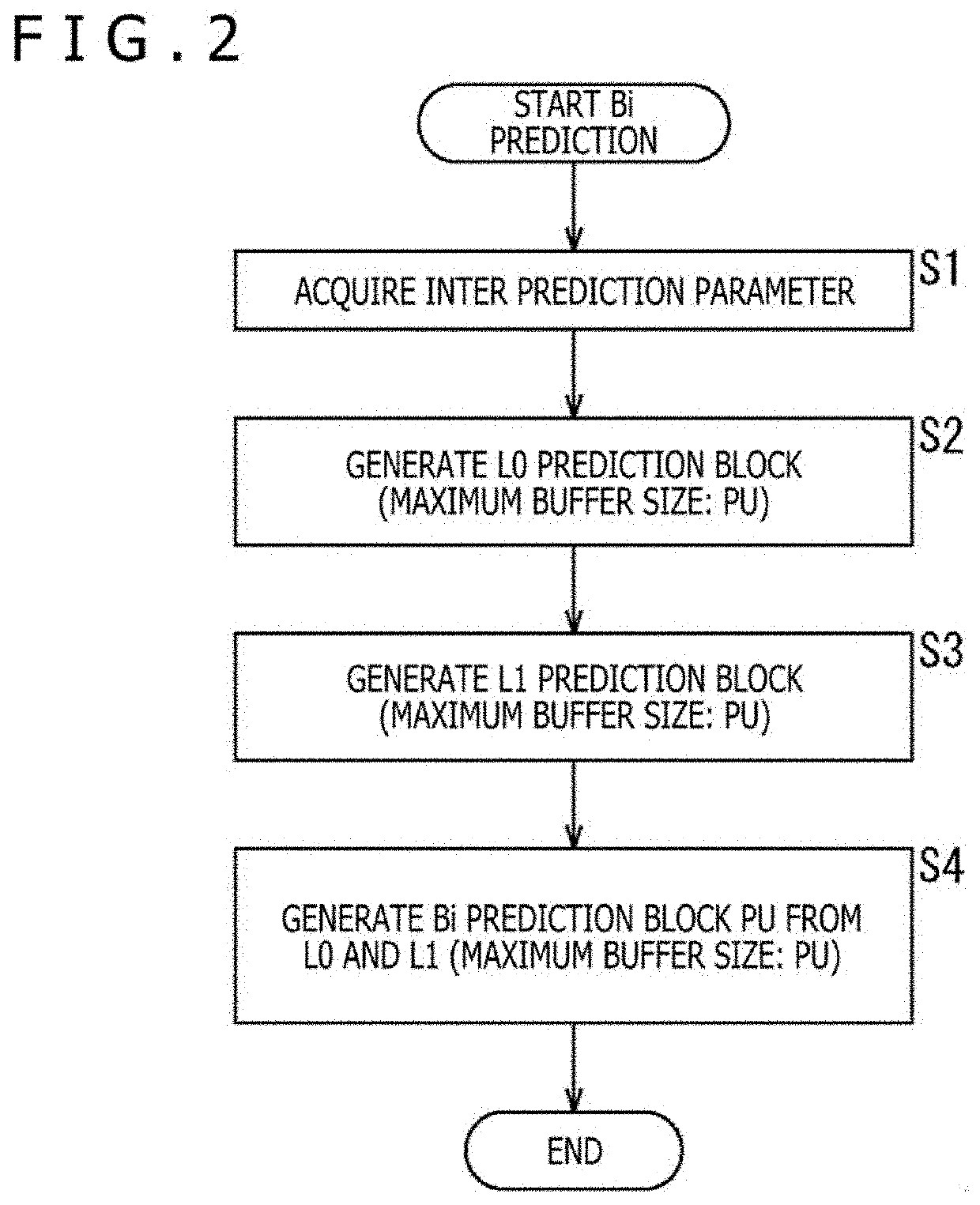Image processing device and method
a processing device and image technology, applied in the field of image processing devices and methods, can solve the problems of high cost calculation, high calculation cost of gradient (g) and velocity (v), which are obtained in bio, and achieve the effect of reducing the buffer siz
- Summary
- Abstract
- Description
- Claims
- Application Information
AI Technical Summary
Benefits of technology
Problems solved by technology
Method used
Image
Examples
first modified example
[0347]In the first embodiment described above, the example in which in a case where PUs are larger than VPDUs, the PU is virtually partitioned into a plurality of vPUs, and a SAD is calculated to determine whether to apply BIO for each vPU is described. The vPUs of the PU are originally included in the same PU, and hence it is conceivable that a certain partial tendency is similar to the tendencies of the different portions.
[0348]FIG. 22 and FIG. 23 are diagrams illustrating, as a first modified example, an example in which in a case where PUs are larger than VPDUs, a BIO determination result for a vPU number of 0 is also used for other vPUs on the premise of the tendency described above.
[0349]In the upper part of FIG. 22, there are illustrated ranges in which SADs have been calculated first for BIO application determination in a case where the CU (PU) is 128×128 and VPDU=64×64 holds. In the case of the CU (PU) of 128×128, of vPUs obtained by partitioning the CU (PU) into four as SA...
second modified example
[0362]FIG. 26 and FIG. 27 are diagrams illustrating, as a second modified example, an example in which whether to apply BIO is determined with a partial SAD value in each vPU.
[0363]In the upper part of FIG. 26, there are illustrated ranges in which SADs have been calculated first for BIO application determination in a case where the CU (PU) is 128×128 and VPDU=64×64 holds. In the case of the CU (PU) of 128×128, a SAD is calculated for an upper left partial region (32×32) of each vPU obtained by partitioning the CU (PU) into two as SAD calculation regions for BIO_vPU_ON determination.
[0364]In the lower part of FIG. 26, there are illustrated ranges in which SADs have been calculated first for BIO application determination in a case where the CU (PU) is 128×64 and VPDU=64×64 holds. In the case of the CU (PU) of 128×64, a SAD is calculated for an upper left partial region (32×32) of each vPU obtained by partitioning the CU (PU) into two as SAD calculation regions for BIO_vPU_ON determin...
second embodiment (
[0419]In a second embodiment, as in the first embodiment, in a case where PUs are larger than VPDUs, the PU is virtually partitioned into vPUs, and the processing is performed in units of vPUs.
[0420]In the second embodiment, unlike the first embodiment, 1 bit of the BIO_PU_ON flag is included in bitstreams that are transmitted / received between the encoding device 1 and the decoding device 101 so that the operation of the encoding device 1 and the operation of the decoding device 101 can be shared.
[0421]FIG. 30 and FIG. 31 are flowcharts illustrating, as an operation example according to the second embodiment of the present technology, BIO-included Bi prediction that is performed by the inter prediction unit 51.
[0422]In Steps S701 to S708 and Steps S715 to S728 of FIG. 30 and FIG. 31, processing basically similar to that in Steps S401 to S408 and Steps S412 to S425 of FIG. 17 and FIG. 18 is performed, and hence the description thereof, which is redundant, is appropriately omitted.
[04...
PUM
 Login to View More
Login to View More Abstract
Description
Claims
Application Information
 Login to View More
Login to View More - R&D
- Intellectual Property
- Life Sciences
- Materials
- Tech Scout
- Unparalleled Data Quality
- Higher Quality Content
- 60% Fewer Hallucinations
Browse by: Latest US Patents, China's latest patents, Technical Efficacy Thesaurus, Application Domain, Technology Topic, Popular Technical Reports.
© 2025 PatSnap. All rights reserved.Legal|Privacy policy|Modern Slavery Act Transparency Statement|Sitemap|About US| Contact US: help@patsnap.com



